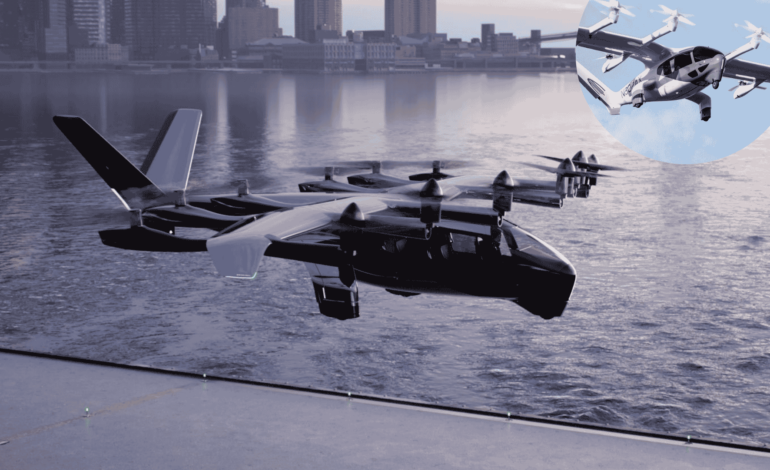Abu Dhabi Launches UAE’s First Hybrid Heliport for Air Taxis

The United Arab Emirates has always been a leader in visionary infrastructure and futuristic innovation, and now, it is setting a new global standard in urban air mobility. With the UAE General Civil Aviation Authority (GCAA) approving the design of the nation’s first hybrid heliport, the emirates are making a bold leap toward a future where air taxis become an integral part of daily life. This hybrid facility is designed to accommodate both traditional helicopters and electric vertical take-off and landing (eVTOL) aircraft. The pioneering site will be located at the Abu Dhabi Cruise Terminal in Zayed Port, a fitting location given its strategic importance to tourism and travel in the capital.
Abu Dhabi Cruise Terminal: A Logical and Strategic Choice
The selection of Abu Dhabi Cruise Terminal at Zayed Port as the home for the first hybrid heliport is a decision rooted in both practicality and foresight. Zayed Port is a major entry point to the capital, particularly for tourists arriving by sea. With more than 650,000 visitors passing through the terminal annually, the location is already embedded in the region’s travel infrastructure. This makes it an ideal testing ground for advanced aerial mobility, where real-time operations can be implemented in an environment rich with passenger traffic.
The terminal is also a stepping stone to some of the UAE’s most celebrated attractions. It provides immediate access to the city’s cultural hub, including the Louvre Abu Dhabi and the Saadiyat Cultural District. Falcon Aviation Services currently operates helicopter tours from this terminal, offering visitors stunning aerial views of the emirate. The introduction of eVTOL vehicles promises to enhance this experience, allowing tourists and residents to explore the city in a quieter, more environmentally friendly way.
Collaborative Innovation: Public and Private Sector Synergy
The hybrid heliport is the result of a collaborative partnership between several leading aviation and infrastructure entities: AD Ports Group, Falcon Aviation Services, and Archer Aviation. This collaboration combines local expertise with global innovation. Archer Aviation, the U.S.-based firm behind the Midnight eVTOL aircraft, brings advanced aerospace technology and operational knowledge to the table. Meanwhile, AD Ports Group and Falcon Aviation Services provide the local infrastructure and logistical insight necessary to integrate this futuristic concept into the heart of Abu Dhabi.
This alliance between private companies and government bodies demonstrates how public-private partnerships can drive meaningful innovation. The GCAA’s active role in facilitating this development reflects a clear commitment to future-proofing the nation’s aviation infrastructure. This is not merely a symbolic gesture; it is a tangible step toward building a sustainable urban transport ecosystem in the UAE.
Midnight eVTOL: A Glimpse into the Future of Urban Flight
The star of this initiative is Archer Aviation’s Midnight aircraft, a fully electric vertical take-off and landing vehicle. Unlike traditional helicopters, Midnight is designed to be significantly quieter, faster, and more environmentally sustainable. The eVTOL aircraft can take off and land vertically like a helicopter but flies horizontally like a fixed-wing airplane, making it ideal for short-distance travel in urban areas.
Archer has announced that test flights of the Midnight air taxi are scheduled to begin in Abu Dhabi this summer. These tests will pave the way for a broader rollout of commercial air taxi services by 2026. The aim is to connect key urban and suburban locations throughout the capital, providing a practical alternative to ground-based transportation and easing congestion on the roads.
What sets Midnight apart is its operational versatility. With a range designed to meet the demands of city-to-city travel and the ability to recharge quickly between flights, it is tailored for high-frequency use. This means it can complete several trips in a single hour, a critical factor in scaling air taxi operations in densely populated regions.
Leveraging Existing Infrastructure: Cost-Effective and Scalable
One of the most promising aspects of this development is Archer’s approach to infrastructure. Rather than building entirely new facilities, the company intends to retrofit existing helipads with electric charging capabilities. This not only reduces capital expenditure but also accelerates deployment timelines.
Abu Dhabi currently has over 70 helipads distributed across the city. According to Nikhil Goel, Chief Commercial Officer at Archer Aviation, these facilities represent a massive opportunity for rapid scaling. By converting traditional helipads into hybrid infrastructure, the city can prepare for the eVTOL revolution without disrupting its existing transport framework.
This approach demonstrates a thoughtful and resource-efficient strategy. It aligns well with the UAE’s broader sustainability goals and positions the capital as a testbed for smart city technologies. By upgrading rather than rebuilding, the UAE showcases how innovation can coexist with practicality.
GCAA’s Regulatory Milestone: Leading the Way Globally
Another highlight of this initiative is the UAE’s leadership in developing regulatory frameworks for hybrid aviation infrastructure. The GCAA is the first civil aviation authority in the world to create standards that support the joint operation of helicopters and eVTOLs from the same platform.
These regulations are crucial in ensuring the safe, efficient, and interoperable use of airspace. Without them, the integration of new aerial vehicles into the existing aviation ecosystem would be fraught with risks and inefficiencies. The GCAA’s forward-thinking approach not only supports domestic implementation but also positions the UAE as a global reference point for other nations exploring similar ventures.
The regulatory standards are currently in the final stages of development and are expected to be published by July 2025. This timeline aligns well with Archer’s plans for the commercial launch of air taxi services in 2026, ensuring that all safety and operational protocols are in place well ahead of time.
Transforming Urban Mobility: The Bigger Picture
The introduction of a hybrid heliport and eVTOL services is not merely a technological upgrade—it’s a transformative shift in how cities function. Urban mobility is undergoing a major evolution, and the UAE is at the forefront of this change. By enabling vertical take-off and landing within city limits, these vehicles can bypass road congestion, reduce travel times, and significantly lower transportation-related emissions.
This form of air travel is especially well-suited to cities like Abu Dhabi, where distances between key business and leisure destinations are manageable by air and where road traffic can sometimes hinder efficiency. Whether it’s a businessperson traveling to a meeting, a tourist heading to a cultural site, or a resident commuting across town, eVTOL services provide a new, more flexible mobility option.
The hybrid heliport also paves the way for other smart infrastructure initiatives. It can serve as a blueprint for integrating drone delivery networks, emergency medical response systems, and autonomous aerial logistics—all of which are part of the emerging urban air mobility ecosystem.
Cultural and Economic Benefits for Abu Dhabi
Beyond the technological and operational aspects, this initiative also carries significant cultural and economic implications. Abu Dhabi stands to gain not just in terms of transport efficiency, but also as a global model of innovation. Hosting the first hybrid heliport in the region enhances the capital’s reputation as a forward-thinking city that welcomes cutting-edge ideas.
Tourism is another sector that will see clear benefits. Sightseeing from the air becomes a more accessible and sustainable activity, attracting new demographics of tourists interested in modern experiences. Meanwhile, local businesses may benefit from improved logistics and faster intra-city movement, enhancing productivity and customer satisfaction.
Furthermore, this development is expected to create new job opportunities in aviation, engineering, regulatory compliance, and customer service. It also strengthens local expertise in managing and maintaining advanced aviation systems, adding value to the national knowledge economy.
A New Era of Aviation Takes Flight
As the UAE continues to pioneer bold and innovative ideas, the approval of the country’s first hybrid heliport marks a milestone that combines vision, technology, and strategic foresight. With Archer’s Midnight aircraft preparing for test flights, and regulatory frameworks being finalized by the GCAA, the infrastructure for a new era of urban mobility is rapidly falling into place.
Abu Dhabi’s hybrid heliport represents more than just a new mode of transport; it is a symbol of what the future can look like when collaboration, innovation, and sustainability come together. The capital’s skies are opening up, and the journey toward smarter, cleaner, and more efficient transportation has truly begun. In doing so, the UAE once again positions itself not only as a regional leader but as a global pioneer in the aviation landscape of tomorrow.







